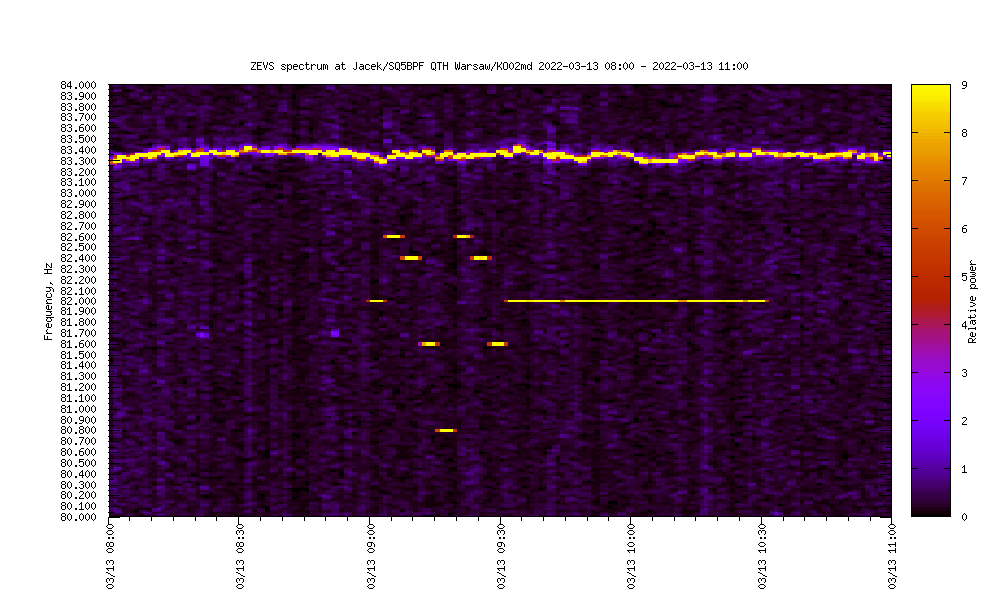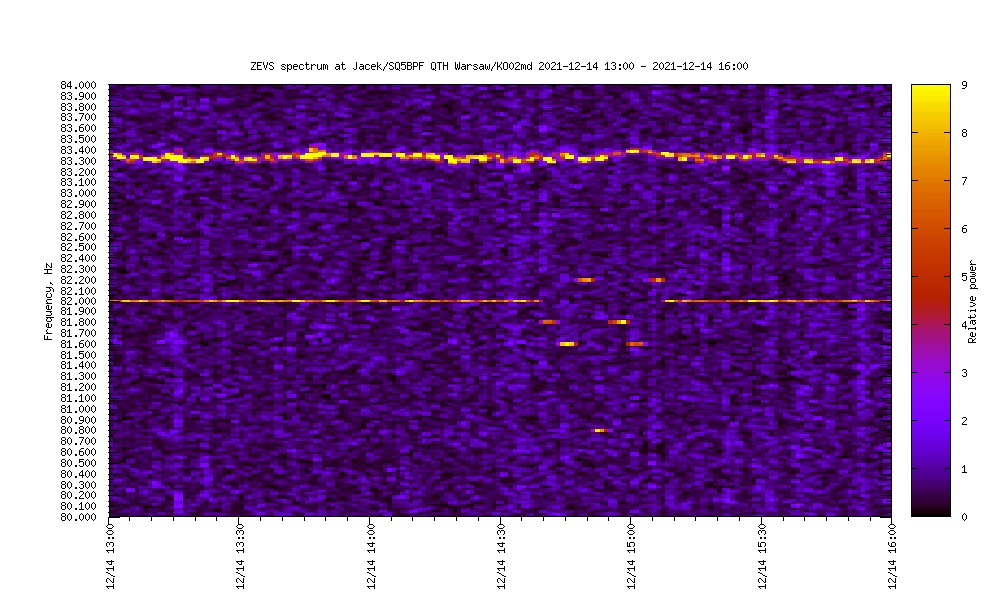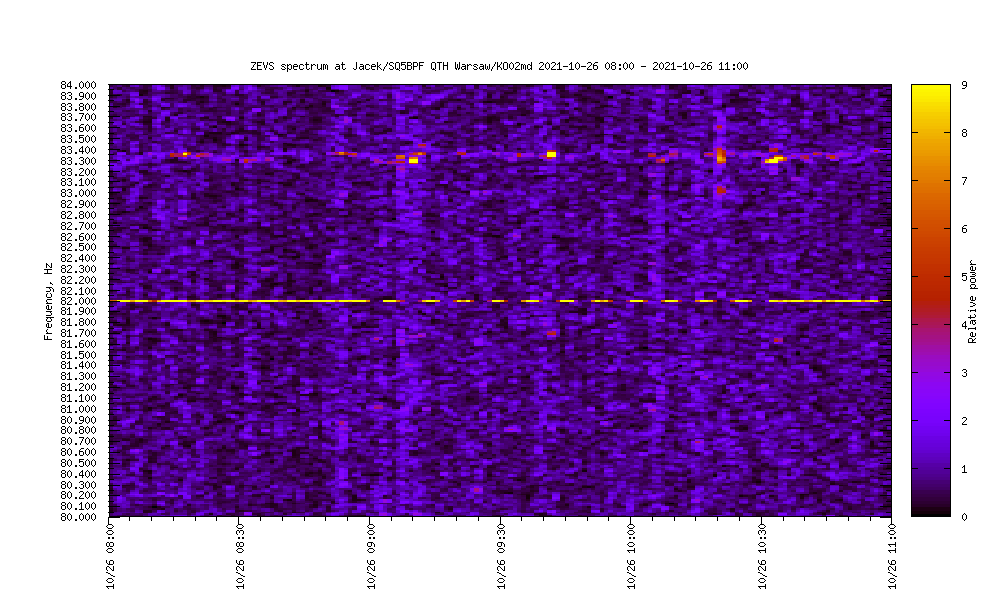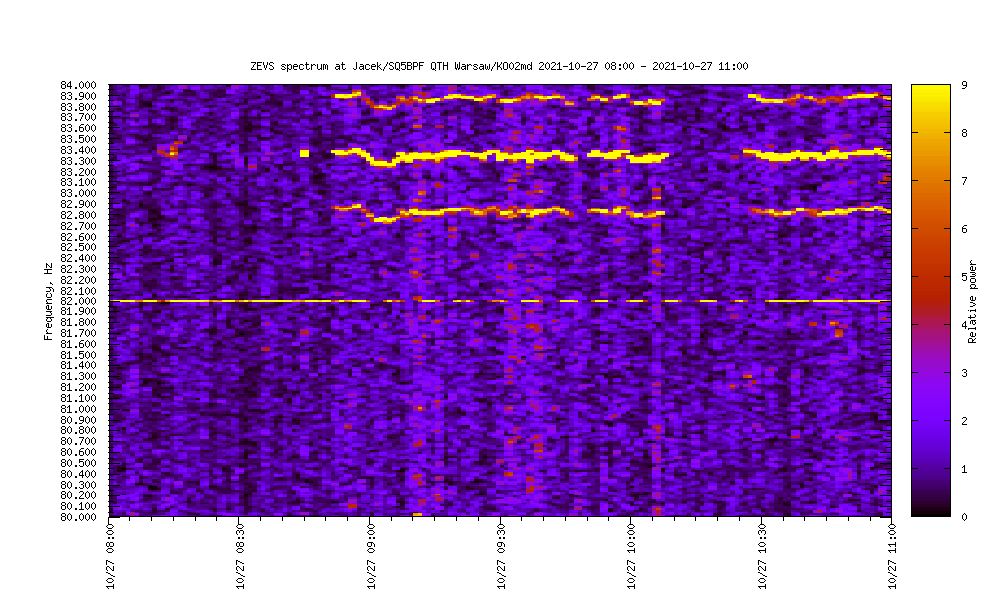In previous articles i’ve shown some typical ZEVS messages , and an analysis of the amount of messages per day .
This repository has all of the scripts used during the analysis: https://github.com/sq5bpf/zevs-analysis
So what more could we get out of the opublished ZEVS dataset ?
Analyzing the 82.0Hz carrier
Before and after the message an 82.0Hz carrier is transmitted. Sometimes it’s transmitted only for a while:

And sometimes it is transmitted for much longer:

So i did an analysis how many minutes the carrier is on each day. The analysis is done by the find_zevs_activity.py script.

A large pdf file with the analysis is here: https://raw.githubusercontent.com/sq5bpf/zevs-analysis/main/zevs_activity.pdf
It seems that the amount of minutes that i receive the 82Hz carrier each day is more or less the same (where there are 0 minutes, it usually means a problem with the receiver). But i can observe periods when ZEVS transmits much less of the 82.0Hz carrier:
2021-11-30 - 2021-12-09 2022-03-07 - 2022-03-13 2022-05-17 - 2022-06-10
These dates don’t seem to match any historical events that i know of (maybe someone else has an idea what they might be?).
During these periods the normal 1-3 messages per day is transmitted. The amount of messages per day can be seen here:: zevs_messages_perday
Interrupted carrier on 82.0Hz
On 2021-10-26 at 9:00 ZEVS transmitted an interrusped carrier 82.0Hz:

The same repeated on 2021-10-27 at 9:00:

I found this while manually looking over parts of the spectrum.
Amateur radio operators will often send dots (short carrier, break, short carrier, break etc) as a test signal. Maybe someone is also testing the ZEVS transmitter.
If you use this work, or have any comments, please send me an email
Author: Jacek Lipkowski SQ5BPF < sq5bpf (at) lipkowski.org >
![]()
This article is published under the Attribution 4.0 International (CC BY 4.0)
https://creativecommons.org/licenses/by/4.0/
